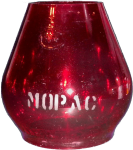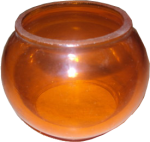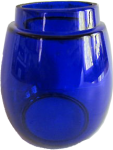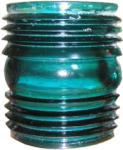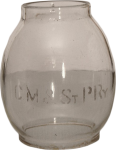Lantern Globes can be categorized mainly into either tall-globes ( 5-3/8″ up to 6″ tall ) or short-globes ( mainly 3-1/4″, but some models use 4-1/4″ or 4-1/2″ globes)
When describing a globe that is not with a lantern there are several ways collectors will describe it:
Size: Is it a tall-globe or short-globe?
Shape: For tall globes is it pear-shaped ( fatter at the bottom ) or barrel-shaped ( fatter at the middle ). Short globes should be roughtly symmetrical throughout the profile, they can come in standard or fresnel styles though.
Markings: Is the globe marked with a railroad name or initials? Many globes are not marked, but in general marked globes are the most desirable to collectors. Common markings found on globes would be a company’s logo, name, or initials ( most common ) and often the manufacturer’s mark as well. The last thing to consider with markings is whether the marking is etched on to the glass or “cast” as part of the glass. Cast letters are more desirable than etched, as today someone with a stencil of the original mark could take an unmarked globe and acid etch new markings that are not original.
Color: Globes came in many colors to allow conductors and operators to communicate signals. The meanings of the colors are:
Red – stop
Yellow (or Amber) – proceed with caution
Green – proceed
White (or Clear) – Flag stop
Blue – workers are under or around a car and it should not be moved or coupled for safety (Note: these are the meanings of colors for signal lanterns, not switches or train markings)
Type of Base: Early globes were made with a short extension at the base that sat into the lantern frame to keep it in place, referred to by collectors as an “extended base”, when Corning patented its system of production globes were stronger and so globes began to be produced without the small flange at the bottom.
Manufacturer: The most common manufacturer’s marks are: Corning (marked “CNX”), Adlake (marked “ADLAKE KERO”), and Kopp (marked “K” in a circle), and Macbeth-Evans. Corning is by far the most common as they held a crucial patent during the early 1900s when kerosene lanterns were king.
See pictures below for various types and colors of globes:

